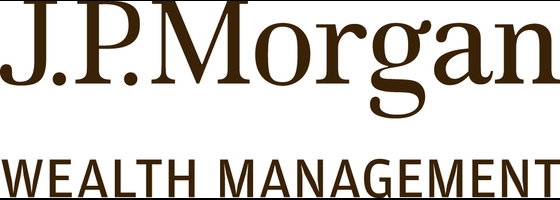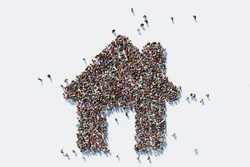What Is Fat FIRE?

Our evaluations and opinions are not influenced by our advertising relationships, but we may earn a commission from our partners’ links. This content is created by TIME Stamped, under TIME’s direction and produced in accordance with TIME’s editorial guidelines and overseen by TIME’s editorial staff. Learn more about it.
If you want to retire early, you’ve probably heard the term “FIRE.” FIRE stands for Financial Independence, Retire Early and is a strategy followed by those who want to stop working before the typical retirement age. To make this happen, they seek to earn and save enough money while they’re young so that they can live off their investment earnings for years before they become eligible for Social Security retirement benefits in their mid-60s. Reaching financial independence looks different for everyone, but a traditional FIRE strategy focuses on minimizing expenses to help make early retirement a possibility.
Fat FIRE takes this strategy a step further. It’s a more aggressive plan that’s designed for high-earning professionals who expect to have more than $100,000 in annual expenses after retirement and want to continue to live abundantly. Learn about fat FIRE to see if it’s a good option for you.
INVESTMENT AND INSURANCE PRODUCTS ARE: NOT A DEPOSIT • NOT FDIC INSURED • NO BANK GUARANTEE • MAY LOSE VALUE
J.P. Morgan Wealth Management is a business of JPMorgan Chase & Co., which offers investment products and services through J.P. Morgan Securities LLC (“J.P. Morgan”), a registered broker dealer and investment adviser, member FINRA and SIPC. TIME Stamped is a publisher of J.P. Morgan, (“Publisher”). The Publisher will receive compensation from J.P. Morgan if you provide contact details to speak with a J.P. Morgan representative. Compensation paid to the Publisher will be up to $500 per completed contact form. Compensation provides an incentive for the Publisher to endorse J.P. Morgan and therefore information, opinions, or referrals are subject to bias. J.P. Morgan and the Publisher are not under common ownership or otherwise related entities, and each are responsible for their own obligations. Investing involves market risk, including possible loss of principal, and there is no guarantee that investment objectives will be achieved.
The traditional FIRE strategy requires you to cut your expenses to the bare minimum and live a minimalist life—perhaps trading your large family home for a recreational vehicle or small apartment and moving to a region with a low cost of living. Fat FIRE is similar, but focuses more on abundance. That makes it a sound retirement strategy for high earners who live in an expensive city and are used to pricey meals out and frequent travel to top-end destinations.
Fat FIRE requires you to save and invest far more money than you’d need for lean FIRE. You’ll need a high passive income from the money you’ve saved to maintain your preferred lifestyle in retirement. To achieve this, you’ll need to focus on maximizing your earnings now and investing in a diversified portfolio that includes some investments likely to grow.
There are many pros to choosing fat FIRE as your retirement strategy. The main benefits of fat FIRE are:
As with most things in life, there are downsides to the fat FIRE strategy. The main negatives to keep in mind include the following:
Living large on Fat FIRE might sound like an ideal retirement strategy, but it’s not for everyone. Some people might actually prefer a more minimalist, ascetic lifestyle or welcome part-time job after retirement for the social interaction. However, if the following apply to you, it’s well worth considering the fat FIRE strategy.
Fat FIRE allows you to live in abundance after you retire. That includes living in an expensive home, driving a newer vehicle, traveling to exotic locations, eating out at pricey restaurants, and purchasing luxury items. Traditional FIRE focuses instead on restraint and minimalism. Rather than earning enough passive income to support an expensive lifestyle, you’ll only need enough money for the basics. That might mean selling your home and buying a smaller house or condo, eating out less often, choosing cheaper items, and giving up expensive travel.
Both are good options for someone who wants to retire early. Your choice will depend on how you see yourself living after retirement—and how successful you are at amassing the funds it will take. Economic conditions will also shape your options.
The amount of money you need for fat FIRE will depend on the expenses you expect to have when you retire. In general, fat FIRE is a good option for anyone with $100,000 or more in expected annual expenses. But if you live in an expensive area, you may need a lot more passive income to support yourself once you stop working. That’s why it’s essential to calculate your fat FIRE number before deciding whether this is a realistic path.
Luckily, there is a simple way to calculate fat FIRE. First, you’ll need to estimate your average annual expenses after you retire, and then you’ll need to see how much you’re currently saving each year.
To figure how much you’ll need to achieve fat FIRE, multiply your expected annual expenses by 25. That will allow you to withdraw 4% a year—a widely recommended amount for wealth preservation—after retirement without diminishing your savings, assuming that your investments grow by at least that much on average. Then, calculate how many years it would take to reach that number with the amount you’re saving each year.
For example, let’s say you anticipate having $100,000 in annual expenses after retirement and are saving $75,000 per year. First, you’ll calculate your fat FIRE number:
With $2.5 million saved, withdrawing 4% per year after retirement will give you an annual income of $100,000—enough to cover your living expenses without needing to have a job.
Next, you’ll need to work out how long it will take to save that amount based on your annual savings and your expected annual return on your investments. It will likely take more than a decade (and probably closer to two) of diligently saving and working toward your number before you achieve fat FIRE. It’s a good idea to use several different percentage returns when calculating the time it’ll take to get to your fat FIRE number since returns aren’t guaranteed.
If fat FIRE sounds like your ideal retirement strategy, there are some changes you can make to your current lifestyle to help you get there more quickly.
If applicable, you may consider lowering the amount of money you contribute to your child’s 529 college plan—especially if they plan on attending a lower-cost school or contributing to tuition. This decrease can be a temporary measure while you work toward fat FIRE. You can always bump up your contributions later if you’re worried there won’t be enough to cover your child’s education.
Some people follow the fat FIRE plan so they can afford to live in an expensive city when they retire. But if you’re OK living in a lower-cost area for now, you’ll need fewer savings to achieve fat FIRE, and you’ll be able to save more money since your monthly expenses will be lower. This strategy can help you reach your goals faster.
Consider cutting back on how often you eat out at restaurants or go on vacation so you can put more money into savings. Once you reach your fat FIRE number, you can spend more on these things as long as you include them when calculating your expected annual expenses.
Before starting fat FIRE, think hard about whether it’s the right path for you. Here are some of the primary considerations:
Fat FIRE is just one retirement strategy out of many. If you’re considering fat FIRE but aren’t sure it’s the best path for you, the answers to the following questions can help you make a decision.
Your fat FIRE number is the amount of money you need to have saved to follow the fat FIRE plan. There are a couple of steps you’ll need to take to find your number:
There are several types of FIRE: lean FIRE, fat FIRE, barista FIRE, and coast FIRE. The differences between each type are described below.
Coast FIRE is similar in concept to fat FIRE, but once you reach your investment goal, you’ll continue working until you’re closer to retirement age, but with different savings and spending strategies – now you’re “coasting.”. Once you reach your FIRE number, you can stop contributing to your retirement accounts to free up more disposable income, or keep contributing to give yourself even more cushion at retirement.
Another retirement option is barista FIRE. With this strategy, you’ll keep working but shift your focus to low-stress, part-time work. This strategy means you’ll still earn some money to help with expenses (and keep your health insurance coverage if possible) rather than needing to live solely on your investments. As a bonus, holding a part-time job after retirement – particularly one in a physical location, such as a coffee shop – can help stave off the disconnectonmany people experience when they stop working.
Lean FIRE and fat FIRE are very similar, but lean FIRE focuses on minimalism, which means you’ll need to save less overall to reach your goal. If you prefer the idea of retiring in a camper vanand growing your own food, lean FIRE is probably a better option.
TIME Stamped is paid a flat fee for each successful referral to Herring RIA Sub, LLC ("Playbook") made through our links. TIME Stamped is not a Playbook client. There is no guarantee that clients will have similar experiences or success.
The information presented here is created by TIME Stamped and overseen by TIME editorial staff. To learn more, see our About Us page.




